Wild Grasses of Arizona
by Dave Thayer
Comments/corrections: dave.canyondave@gmail.com
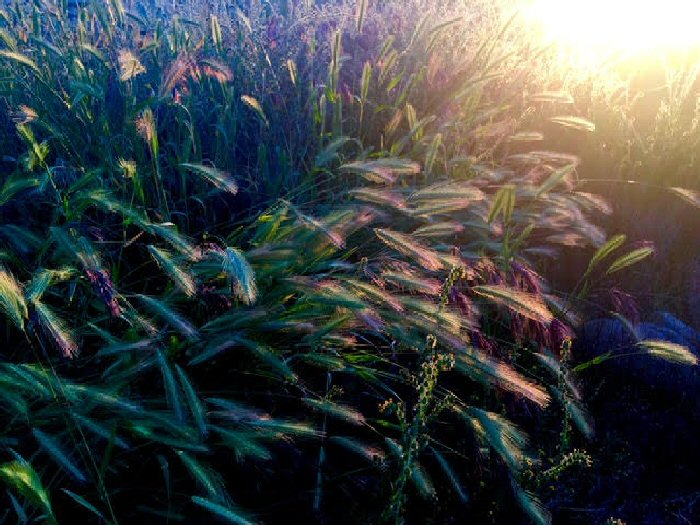
Grass Identification
If you are using a cell phone, this page shows better if you turn your cell on its
side. If you just want to identify a grass, you can skip this introduction and
navigate to the Identification Key or a grasses Index above.
The internet is full of information about grasses. You can learn that grasses feed the world:
wheat, corn, rice, oats, and barley are all grasses. Certain invasive grasses can become weeds and crowd out native plants.
Grasses don't have showy flowers because they are wind-pollinated. Bamboo is the
largest grass.
But what if you simply want to identify a grass you have found?
This site is designed as a simple way to identify grasses. My goal is to make
it easy by focusing on how a grass looks. Understanding most published grass
descriptions requires a whole new vocabulary. I do recommend learning some new
terms, but I will try to minimize this chore by using drawings and photos and by
explaining in plain English. I will show you, mainly through pictures, how to
identify many of Arizona’s approximately 460 grass species.
All the drawings and all the photos are mine except for a couple as
indicated. Mine are free for you to use in any way you choose.
Incidentally, most of Arizona's grasses occur throughout America
and occur on many continents. Some are considered invasive pests, but frankly I am not inclined to disparage any of them...except
maybe Buffelgrass (Cenchrus ciliaris) which is taking over the Sonoran Desert.
Since the difficulty of grass identification is notorious, just recognizing
30 or so species should be sufficient
to amaze your naturalist friends. You might get hooked, as I have. In studying butterflies, I read that the small skipper
butterflies are fun to learn in part because they are such a challenge. I agree, and I hope your interest will take
you to a level that challenges you.
In the field you will need a good hand lens magnifier to start, and probably a camera, a field notebook, and
some long narrow bags for carrying grasses you collect. Subway sandwich bags or newspaper bags work well. A useful item I use
is a set of plastic ties to wrap bunches of grass and write the date and location: I use Huouo Nylon Cable Ties Self-Locking.
It will help also to have handy a tool for digging up grass plants--a rock hammer works well in the hard Arizona soils. You
should collect the roots along with the leaves, stems, and especially the seedheads. Look for stolons, rhizomes,
and other signs of perennial versus annual grass. Record this information while you are in the field--otherwise it is
too late.
Later in your
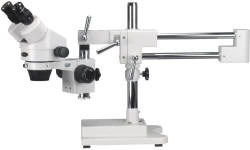
Following are some drawings of grass parts. You must learn many of these in order to understand published and online
grass descriptions. My website is a work in progress, with new grasses added as I have time. So let’s get started. You
can go to the grasses key,
jump to the list of grasses, or start by learning a few terms below.
The Parts of a Grass Plant
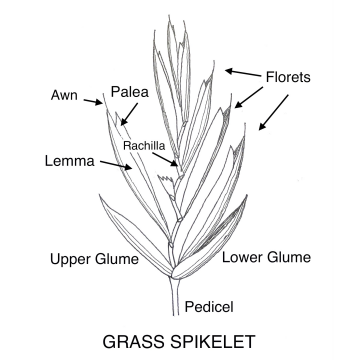
The spikelet is the unit of grass identification. A single plant will have many spikelets attached to the seed head. Each spikelet has two tiny leaf-like glumes at bottom and one to many florets above the glumes. Florets are held to each other by an axis called the rachilla. Each complete floret consists of two tiny leaf-like structures called the lemma (lower) and palea (upper). These enclose the reproductive parts as shown next. Many glumes and lemmas have needle-like projections called awns. |
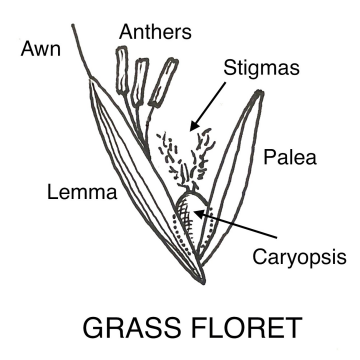
After the floret develops, the lemma and palea usually open a bit and the beautiful female stigmas protrude. Pollen is ejected from the extended male anthers and blown in the wind in a process called anthesis. The pollen sticks to the stigmas, fertilizes the ovary, and a seed called a caryopsis grows. In the previous drawing, the florets are closed. Be aware that all these parts can be very tiny, usually needing a hand lens to see. |
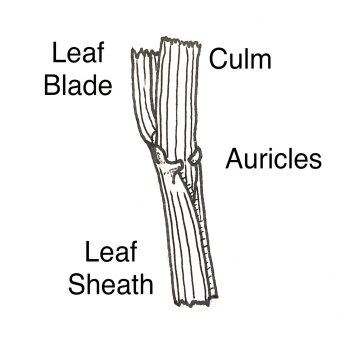
The main grass stem below the seedhead is called the culm. Each grass leaf has two main parts, the blade and the sheath. The sheath is wrapped around the culm, so it looks like part of the stem, while the grass blade extends from the culm and is the thing that makes a lawn. Each sheath extends down to the next lower node or stem segment. Sometimes, at the junction of blade and sheath, there might be little ear-like structures called auricles. |
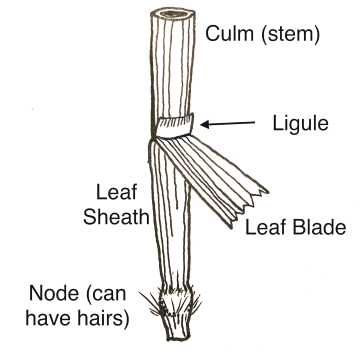
The ligule is often used as an identification feature. It is a thin structure attached to the leaf at the junction of sheath and blade. The ligule may be membranous (usually white and very thin) or ciliate (hairy). This one is membranous at its base (white) and ciliate at the top (little hairs). Use a hand lens to locate these. |
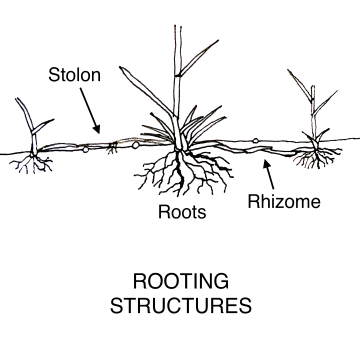
|
The Seedhead: Spike, Panicle, or Spike-like Panicle
SpikesAt the top of a grass stem, or culm, is the
seed head or
inflorescence. All grass
inflorescences (except bamboo) are annual, growing anew each year even
in a perennial plant. When the inflorescence is narrow like those shown
here, and each spikelet grows directly on the stem, the inflorescence is called a
spike. Some grass seed heads
have branches that open into a wide panicle; therefore, they are not a spike.
But when these branches grow appressed to the stem, and thus appear like a spike, they are termed
"condensed panicles" and are called "spike-like." Note that all my photos with graph paper are ruled in quarter inches. |
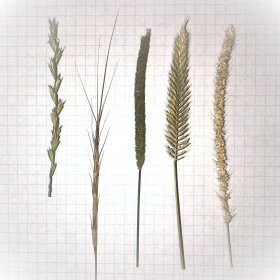
|
Panicles: Open Inflorescences

|
Seed heads like these three above take the form of spreading panicles. Panicles take many shapes. Grasses will show panicles only if there are branches that hold the spikelets. However, some grasses may appear spike-like at first, when the grass is young, but they are not spikes because they have branches. Then later, especially during anthesis when they eject pollen, these condensed spike-like panicles open up and become more panicle-like. After anthesis, some grasses may return to a spike-like form, with panicle branches appressed to the rachis. But even if they look like spikes they are panicles if they have branches. |